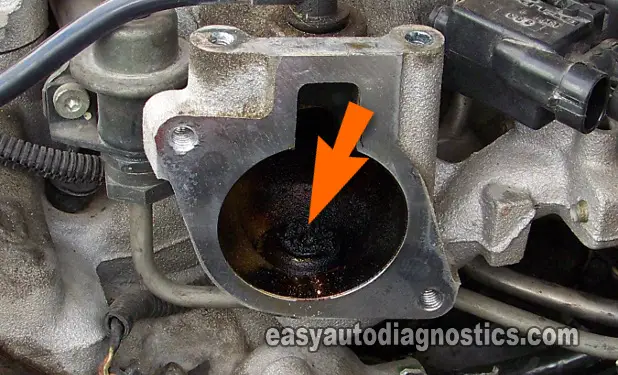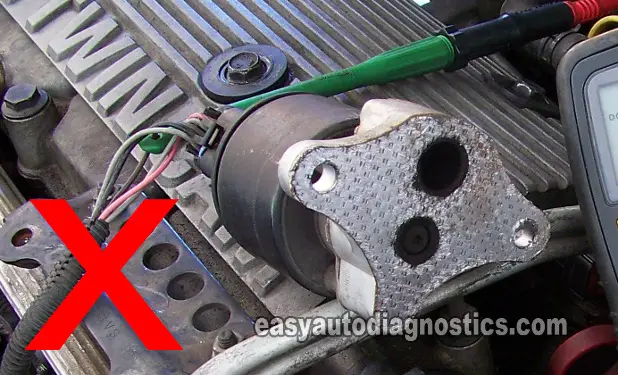TEST 7: Intake Manifold Blocked With Carbon

In this section, I want to share with you what the intake manifold will look like when it gets clogged.
I'll also offer you some suggestions on how to clean it. I do have to tell you that I won't be offering any specific/detailed remove and replace info (you'll need to look into a repair manual or google it).
OK, depending on the type of vehicle you're driving and the amount of space you have available, you can clean the intake manifold's plenum's EGR passages without removing the plenum from the engine (all you need to do is remove the throttle body and the EGR valve).
Some of the vehicles covered by this article require that the plenum be removed, no ifs and or buts.
The ideal (even if you don't need to remove the plenum) is to remove the plenum from the car, so that the carbon pieces you'll be removing don't fall into the combustion chambers.
If you do remove the plenum, here are my suggestions:
- Once the plenum is removed, place clean rags on all six intake ports
- This will prevent any foreign object (like a bolt or nut) from falling into the combustion chambers.
- If something falls into the open ports and into the cylinder, the only way to remove it is by removing the cylinder head. This is a nightmare you don't want to experience.
- Use a piece of coat hanger (as a type of snake) attached to an electric drill to clean out the EGR passages in the plenum.
- This method along with plenty of carburetor cleaner spray will effectively remove the carbon.
- Once you're done:
- Use a new intake manifold plenum gasket and install it without sealant (like RTV Silicone).
- Use a new throttle body gasket and install this bad boy without any type of sealant too.
- Installing these gaskets with any type of sealant may cause them to leak vacuum down the road.
Identifying The EGR Valve
To make sure this linear EGR valve test tutorial applies to your specific vehicle, the base of the EGR valve on your specific vehicle should look like the one in photo 2 of 2 (in the image viewer above).
If the EGR valve on your vehicle looks like the one in the photo with the red X (and your vehicle is a 1999 or older model year and a 2.2L, 2.4L, 3.1L, 3.4L, 3.8L, 4.3L, 5.0L, 5.7L etc.), then your vehicle comes equipped with the older style EGR valve. You'll need to use this tutorial to diagnose it: How To Test The GM EGR Valve -Buick, Chevy, Olds, Pontiac.
Where To Buy The EGR Valve And Save
The following links will help you comparison shop for the EGR valve and the throttle body gasket:
Not sure if the above EGR valve or throttle body gasket fits your particular GM vehicle? Don't worry, once you get to the site they'll make sure it fits. If it doesn't, they find you the right part.
More GM 3.1L, 3.4L V6 Tutorials
If this tutorial was helpful, there's plenty more, and you can find them in the following new indexes:
- GM 3.1L Index of Articles (Chevrolet and Pontiac).
- GM 3.4L Index of Articles (Chevrolet and Pontiac).
- GM 3.1L, 3.4L Index of Articles (old section).
New 3.1L and 3.4L V6 Buick and Oldsmobile diagnostic tutorials can be found here:
- GM 3.1L Index of Articles (Buick and Oldsmobile) (at: troubleshootmyvehicle.com).
- GM 3.4L Index of Articles (Buick and Oldsmobile) (at: troubleshootmyvehicle.com).
- GM 3.1L, 3.4L Index of Articles (old section) (at: troubleshootmyvehicle.com).

If this info saved the day, buy me a beer!







